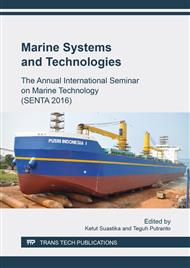p.155
p.165
p.174
p.181
p.189
p.199
p.207
p.215
p.221
Causative Chains that Leads to Ship Collisions in Japanese Maritime Traffic System (MTS) as Final Outcome of MOP Model
Abstract:
This paper is written as one of the records of MOP model developments. MOP model is a new creation model for re-analyzing accidents in maritime traffic system (MTS). MOP is an abbreviation from 4M Overturned Pyramid, where 4M is Man, Machine, Media, and Management. The MOP Model is a 3D view model, looks like thee sided inverted pyramid that has 4 corners representing 4M and 6 edges as line relation for corners. At this paper, MOP model has been developed until the last steps. There are 2 steps utilizing MOP model when re-analyzing accidents, namely Corner Analysis (CA) that resulting causative factors (CFs) as the first step, and Line Relation Analysis (LRA) that resulting causative chains (CCs) as the second step. To see how this step works, 20 ship collisions in Japanese MTS have been re-analyzed. In this research, MOP Model has been upgraded until the second step, namely Line Relation Analysis (LRA). The outcome of this step is causative chain (CC). The results is there is core causative chain that has several heads and tails. However, most of the causative factor (CF) that perform CC are classified in Man Factor, especially improper look-out.
Info:
Periodical:
Pages:
221-227
Citation:
Online since:
January 2018
Price:
Сopyright:
© 2018 Trans Tech Publications Ltd. All Rights Reserved
Share:
Citation:


